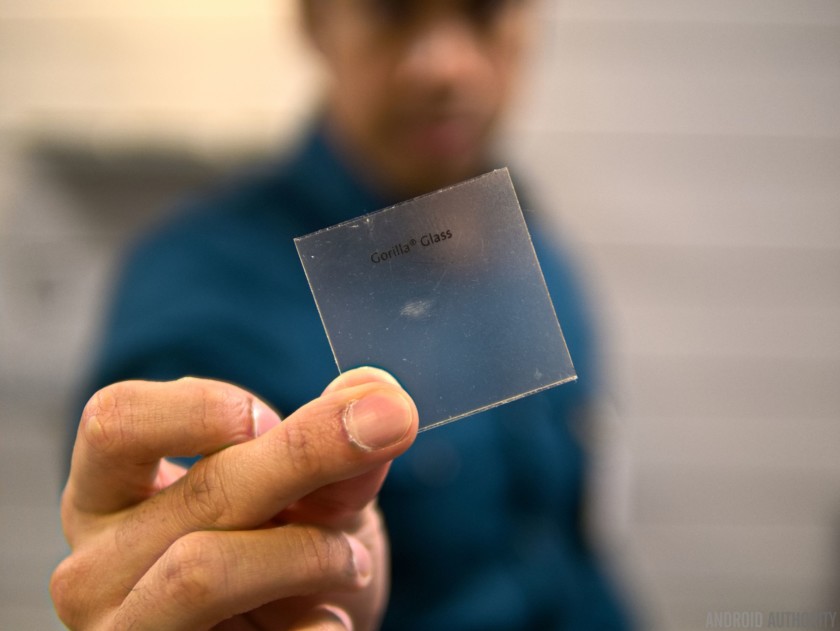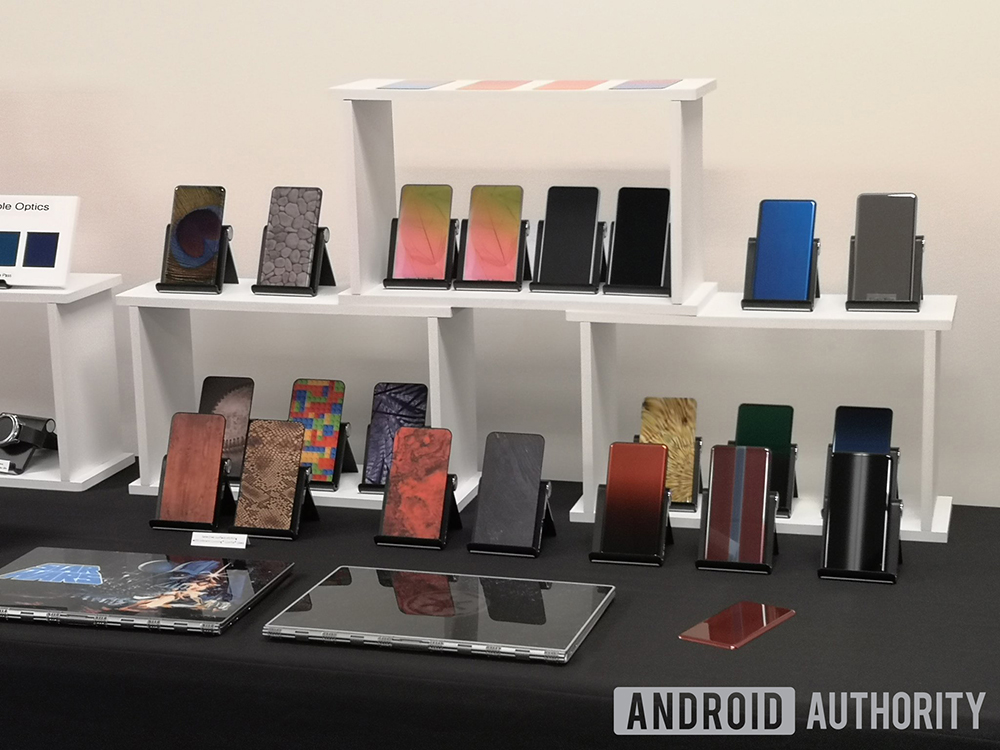Gorilla Glass 6 has just been announced, marking the latest version of the popular scratch-resistant glass for smartphones and tablets.
The technology has been protecting a wide variety of phones for years now, but it’s not the only solution on the market. Dragontrail Glass, Sapphire, and tempered glass are all popular options. So how do they all differ from one another? Which one is best? We’ve got a few answers.
How are they made?
Gorilla Glass
As the latest name suggests, Gorilla Glass has gone through many iterations. The first generation of the product launched in 2007, followed by Gorilla Glass 2 in 2012 and Gorilla Glass 3 in 2013. Most major flagships released this year feature Gorilla Glass 5, which first released in 2016.
The basic process is the same for each generation, using an “ion-exchange process.” This is essentially a strengthening process where the glass is placed in a bath of molten salt measuring 400 degrees Celsius (752 degrees Fahrenheit), according to its manufacturer Corning. Potassium ions in the bath create a “layer of compressive stress” on the glass, basically giving it added strength.
Gorilla Glass 5 offers similar scratch resistance to Gorilla Glass 4, but is 1.8 times more durable in drop tests, the company’s representatives previously said. The glass is also designed to withstand drops from 1.6 meters, with the glass holding firm about 80 percent of the time, according to Corning’s internal tests. Meanwhile, Gorilla Glass 4 was twice as likely to survive a drop test compared to Gorilla Glass 3, but this was from a height of one meter.
As for the latest version of Corning’s product? Well, Gorilla Glass 6 is equivalent to Gorilla Glass 5 in scratch resistance but is designed to survive multiple drops from even greater heights. According to Corning’s press materials, it can survive, on average, 15 drops onto rough surfaces from a height of one meter and is up to “2x better” than Gorilla Glass 5.
Dragontrail Glass
Made by Japanese giant Asahi Glass, Dragontrail is probably the second most popular brand with manufacturers.
The company uses a so-called float process to create its glass, sending liquid glass over a furnace of molten tin. Particles are then added for strengthening before the glass is quickly cooled and sent for cutting.
Dragontrail Glass comes in a few variants — Dragontrail, Dragontrail X, and Dragontrail Pro. 2016’s Dragontrail Pro is the latest product, delivering 30 percent better durability against corner drops thanks to a rounded glass edge. Asahi adds that it should also withstand more bending than standard Dragontrail.
Tempered glass
The cheapest solution of the lot, tempered glass, is the material of choice for many third-party screen protectors.
According to Scientific American, tempered glass is first cut to size and then subjected to heating in a tempering oven. The glass is heated to just over 600 degrees Celsius (1,112 degrees Fahrenheit), followed by a blast of cold air for a few seconds.
The process makes the outer surface of the glass cooler than the inside, which creates compression on the outside and tension on the inside, giving us stronger glass.
Sapphire
Sapphire is the most expensive option on this list, which means it’s mostly restricted to smaller bits like camera lenses and watch faces (including a few Apple Watch models).
According to a 2014 Pocketnow video, Sapphire screens are made by placing a Sapphire seed at the bottom of a barrel. This barrel then gets filled with condensed corundum and leftover uncrystallized Sapphire from previous batches. The barrel is then put inside a furnace, which heats the materials at up to 2,200 degrees Celsius.
The process takes from 16 to 17 days and results in a 115-kilogram hunk of Sapphire. From here, a block is cut out for a smartphone display, then polished and cut further.
Which one is better?
Which is better depends on what you think is most important: scratch resistance, weight and thinness, affordability, impact resistance, or a delicate balance of several of these. We use the Mohs scale to measure the scratch resistance of minerals and other similar materials. A higher number on the scale means better scratch resistance, with talcum rated at one and diamond at 10. A material with a higher rating is also capable of scratching a material with a lower rating, such as a diamond-tipped pick scratching a quartz panel.
A third-party test by YouTub channel JerryRigEverything has shown that Gorilla Glass 5 can withstand being scratched with picks as hard as five on the Mohs scale, so it’s fair to say Gorilla Glass 5 (and probably Gorilla Glass 6) is at least a five. A Corning representative previously told us that all glass falls between five and six on the scale.
Gorilla Glass and Dragontrail Glass seem to be similarly tough in the scratch resistance department
However, one industry source claims Gorilla Glass 4, Dragontrail Glass, and tempered glass all share a hardness of seven on the Mohs scale. Regardless, there doesn’t seem to a huge difference in the scratch-resistance department between Gorilla Glass 4 and Dragontrail Glass (we’ll get to Sapphire in a moment).
Speaking of tempered glass, one mobile chain store claims it’s yet to see a tempered glass protector emerge unscathed after a six or seven point pick scratching. Tempered glass protectors are usually more scratch-resistant than plastic, however, which has a hardness of between two and four on the scale.

Buy a stainless steel or ceramic version of the third-generation Apple Watch and you’ll get a Sapphire display. Apple
Sapphire measures nine on the Mohs scale, just behind diamond. So expect Sapphire-clad devices to fare better in your purse or occupied pocket.
Repair chain UBreakIFix conducted a scratch test on both a Sapphire screen protector and Gorilla Glass 5. The firm used a tungsten pick, which was rated nine on the Mohs scale. The Corning solution got scratched, but nothing happened to the Sapphire protector.
Another way to measure these materials is the Vickers hardness test, which uses a diamond-tipped indenter to measure a material’s hardness (a higher figure is better). Gorilla Glass 5 has a Vickers hardness of between 601 and 638, according to Corning’s product sheet. Dragontrail manufacturer Asahi Glass claims its glass has a Vickers hardness of between 595 and 673.
There isn’t much difference between the two then, as there’s some significant overlap. A look at Sapphire’s hardness rating further illustrates this point. Sapphire boasts a Vickers hardness of over 2,000, with one study putting it at roughly 2,700. In other words, Sapphire is least likely to be scratched out of all these solutions.
What about bending or impact?
Scratches are just one major part of the toughness equation — drops are another major challenge. After all, many people buy cases because of accidental drops rather than everyday scratches.
According to the earlier UBreakIFix video, Gorilla Glass can bend more during a four-point bend test than Sapphire. Sapphire might be more scratch-resistant, but its ability to withstand a drop-induced bend or deformation isn’t as great as Gorilla Glass.
Sapphire might be more scratch-resistant but Gorilla Glass can bend more during a four-point bend test.
This result is echoed by Corning’s own “strength after abrasion damage” test, which tosses the glass sheets into a barrel filled with various items and tumbles them for 45 minutes. Afterward, the sheets are removed and subject to load testing. Corning claims the Sapphire sheet broke after a load of 161lbs (73kg) was placed on it, while its own solution withstood over 430lbs (195kg) of force. To be fair, it’s an in-house test of Corning’s making, but it’s still a revealing result.
Dragontrail manufacturer Asahi hasn’t published a four-point bend test video for its solution, merely showing off a three-point test video from 2011 with up to 60 kilograms (132 lbs) of force applied. It’s not the ideal comparison, given the differing test setups (and older glass in the case of Dragontrail).
The closest we get to an ideal comparison is a 2013 video by Corning, showing Gorilla Glass 2 and 3 faring better than an unnamed competitor’s product (presumably Dragontrail).
Furthermore, unlike Gorilla Glass 5 and its 1.6-meter survivability rating, Asahi hasn’t disclosed any specific height ratings for Dragontrail Glass impact resistance. Instead, the company only says the edge of its latest Dragontrail Pro boasts 30 percent better durability over the previous generation. Corning has previously claimed Gorilla Glass 4 is up to twice as tough in drop tests than rival products (again, presumably Dragontrail).
Then there’s Gorilla Glass 6, which is meant to withstand multiple drops from greater heights. The company claims its new glass survives an average of 15 drops from one meter onto a rough surface. Meanwhile, “alternative aluminosilicate glasses” break on the first drop, according to Corning.
Conclusion
At this point, all major protective solutions are pretty tough on scratches. Dragontrail and Gorilla Glass seem to be evenly matched, while tempered glass doesn’t seem to be far behind at all. Sapphire has a runaway lead over all three solutions but costs significantly more.
In bending and impact tests things get much murkier. There doesn’t seem to be much in the way of like-for-like testing between Gorilla Glass and Dragontrail. Only one thing is for sure: Sapphire is comparatively horrible for flexing and dropping.
Corning’s 1.6-meter drop rating for Gorilla Glass 5 is a big improvement over Gorilla Glass 4’s drop rating. And Gorilla Glass 6 is only improving, as it targets greater heights and multiple drops. Asahi’s silence on drop tests suggests it’s lagging behind, though it seems to be making solid progress with folding displays.
What do you prefer in a display glass? Better scratch resistance or impact resistance?










0 coment�rios:
Post a Comment